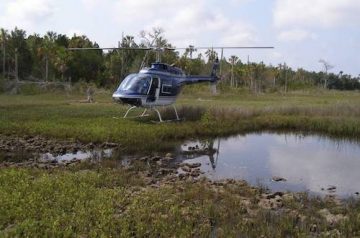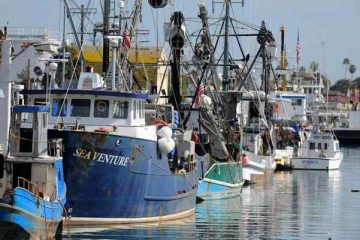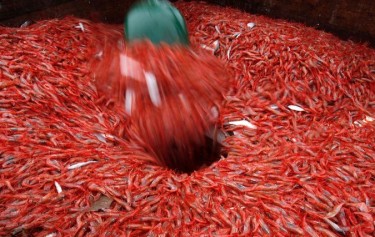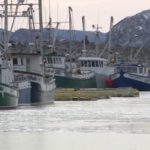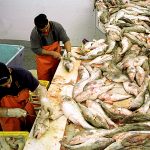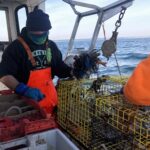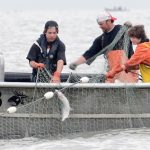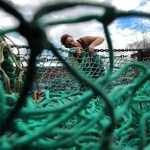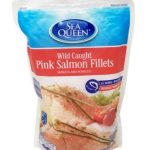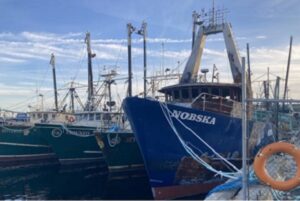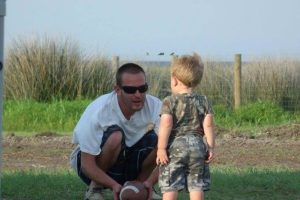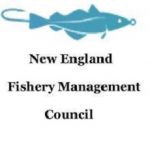Monthly Archives: July 2016
Western Pacific Fishery Management Council takes issue with Hawaii Senator Brian Schatz
 Hawaii Senator Brian Schatz has received a strongly worded letter from the Western Pacific Fishery Management Council concerning his support of the proposed expansion of the Papahanaumokuakea Marine National Monument in the Northwestern Hawaiian islands. A local fishermen who has been following the debate on the proposed expansion says we should be concerned with what’s happening with Hawaii’s fishery because we are next. He says the Hawaii Monument expansion, just like the designation of the Remote Pacific Islands Monument and expansion of the National Marine Sanctuary of American Samoa are examples of the influence of funding by special interest groups such as the Pew Foundation. Read the rest here 13:35
Hawaii Senator Brian Schatz has received a strongly worded letter from the Western Pacific Fishery Management Council concerning his support of the proposed expansion of the Papahanaumokuakea Marine National Monument in the Northwestern Hawaiian islands. A local fishermen who has been following the debate on the proposed expansion says we should be concerned with what’s happening with Hawaii’s fishery because we are next. He says the Hawaii Monument expansion, just like the designation of the Remote Pacific Islands Monument and expansion of the National Marine Sanctuary of American Samoa are examples of the influence of funding by special interest groups such as the Pew Foundation. Read the rest here 13:35
Seminar in Marathon Fla. looks at spiny lobster research
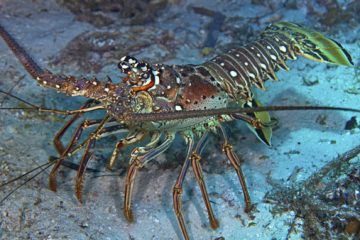 Some top experts on spiny lobster will meet Wednesday in Marathon to discuss the latest research on the crustacean, which is the top-grossing marine species in the Florida Keys generating $70 million a year to the local economy. The Keys waters account for nearly 90 percent of the spiny lobster harvest in the United States. A robust Asian market and a steady catch has made spiny lobster fishery the most lucrative in the Keys. Florida Fish and Wildlife Conservation Commission is hosting the all-day seminar Wednesday as a way to put out the latest research on spiny lobster to the local commercial fishermen and to the public, FWC lobster biologist Tom Matthews said. Bill Kelly, the executive director of the Florida Keys Commercial Fishermen’s Association, said there is a need for new science on the fishery, as the current science used to make regulations is “outdated and goes back to the 1990s.” Read the story here 11:57
Some top experts on spiny lobster will meet Wednesday in Marathon to discuss the latest research on the crustacean, which is the top-grossing marine species in the Florida Keys generating $70 million a year to the local economy. The Keys waters account for nearly 90 percent of the spiny lobster harvest in the United States. A robust Asian market and a steady catch has made spiny lobster fishery the most lucrative in the Keys. Florida Fish and Wildlife Conservation Commission is hosting the all-day seminar Wednesday as a way to put out the latest research on spiny lobster to the local commercial fishermen and to the public, FWC lobster biologist Tom Matthews said. Bill Kelly, the executive director of the Florida Keys Commercial Fishermen’s Association, said there is a need for new science on the fishery, as the current science used to make regulations is “outdated and goes back to the 1990s.” Read the story here 11:57
Connecticut’s Largest Oyster Bed Closed Amid Contamination Concerns
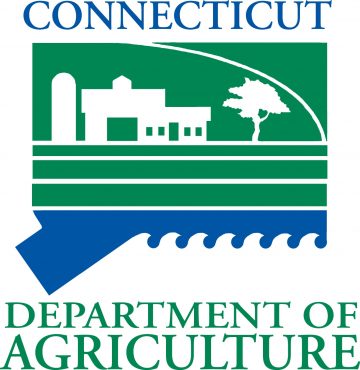 The state’s largest seed-oyster bed has been shut down because of contamination concerns tied to illegal harvesting. The Department of Agriculture says the Housatonic River Natural Oyster Seed Bed was shut down after several incidents involving commercial fisherman breaking harvesting regulations related to contaminated oysters. Commercial fishing firms are supposed to transfer oysters from the river, which contains pollutants from nearby sewage treatment plants, to “relay” beds in the Long Island Sound for six months so they can be naturally cleansed. Oysters that do not go through this process could contain bacteria and viruses that would make people sick if eaten. An oyster boat captain was arrested on June 7 on accusations of illegally transplanting contaminated oysters from the bed onto oysters in the Sound. Since then the state has increased patrols in the area and the Dept. of Agriculture says they have spotted other suspicious activities around the bed. Read the rest here 11:03
The state’s largest seed-oyster bed has been shut down because of contamination concerns tied to illegal harvesting. The Department of Agriculture says the Housatonic River Natural Oyster Seed Bed was shut down after several incidents involving commercial fisherman breaking harvesting regulations related to contaminated oysters. Commercial fishing firms are supposed to transfer oysters from the river, which contains pollutants from nearby sewage treatment plants, to “relay” beds in the Long Island Sound for six months so they can be naturally cleansed. Oysters that do not go through this process could contain bacteria and viruses that would make people sick if eaten. An oyster boat captain was arrested on June 7 on accusations of illegally transplanting contaminated oysters from the bed onto oysters in the Sound. Since then the state has increased patrols in the area and the Dept. of Agriculture says they have spotted other suspicious activities around the bed. Read the rest here 11:03
The Northwestern Hawaiian Islands monument expansion should be opposed – Lyn McNutt
 If you eliminate the U.S. (Hawaiian) fishery, then the area will be completely open to Illegal, Unregulated, Unreported (IUU) fisheries. U.S. fishers are regulated in equipment, species interactions (takes), amount of fish caught and they have VMS onboard as well as observers. The White House supposedly wants to regulate IUU fishing, but this action opens the door for IUU in the area. Who will stop IUU and how will they enforce rules? The state of Hawaii (DLNR) is very quick to claim how they are trying to create a “community” managed system of fisheries ecosystem management with consultation and community involvement in the planning, implementation and operation of community-based fishing. This top-down edict is a complete 180 from “community.” The Antiquities Act does not require any public input. A small group is forcing their view on the people of Hawaii Nei without any discussion of the public (local — not Mainland) perception on the use of the area. This is not pono. Read the op-ed here 10:31
If you eliminate the U.S. (Hawaiian) fishery, then the area will be completely open to Illegal, Unregulated, Unreported (IUU) fisheries. U.S. fishers are regulated in equipment, species interactions (takes), amount of fish caught and they have VMS onboard as well as observers. The White House supposedly wants to regulate IUU fishing, but this action opens the door for IUU in the area. Who will stop IUU and how will they enforce rules? The state of Hawaii (DLNR) is very quick to claim how they are trying to create a “community” managed system of fisheries ecosystem management with consultation and community involvement in the planning, implementation and operation of community-based fishing. This top-down edict is a complete 180 from “community.” The Antiquities Act does not require any public input. A small group is forcing their view on the people of Hawaii Nei without any discussion of the public (local — not Mainland) perception on the use of the area. This is not pono. Read the op-ed here 10:31
Food for Thought! P.E.I. monks buy 600 lbs of lobster to release them into ocean
 More than 600 pounds of lucky lobsters were spared the pot Saturday, thanks to compassionate monks on Prince Edward Island. The monks bought the lobsters from various places around the Island, said Venerable Dan of the Great Enlightenment Buddhist Institute Society in Little Sands. On Saturday, they boarded a fishing boat and released them back into the ocean off the coast of Wood Islands. “Hopefully, we can find a spot where there are no cages waiting for them,” said Dan. The purpose is to cultivate compassion not just for the lobsters, but for all beings, he said. “We respect everyone’s dietary choice, so we’re not doing this to convert everybody to be vegetarians or vegans,” he said. “This whole purpose for us is to cultivate this compassion toward others. It doesn’t have to be lobsters, it can be worms, flies, any animals, drive slower so we don’t run over little critters on the street.” Read the rest here 10:02
More than 600 pounds of lucky lobsters were spared the pot Saturday, thanks to compassionate monks on Prince Edward Island. The monks bought the lobsters from various places around the Island, said Venerable Dan of the Great Enlightenment Buddhist Institute Society in Little Sands. On Saturday, they boarded a fishing boat and released them back into the ocean off the coast of Wood Islands. “Hopefully, we can find a spot where there are no cages waiting for them,” said Dan. The purpose is to cultivate compassion not just for the lobsters, but for all beings, he said. “We respect everyone’s dietary choice, so we’re not doing this to convert everybody to be vegetarians or vegans,” he said. “This whole purpose for us is to cultivate this compassion toward others. It doesn’t have to be lobsters, it can be worms, flies, any animals, drive slower so we don’t run over little critters on the street.” Read the rest here 10:02
Kuskokwim area may see a commercial fishing opening after all
 Washington state fish brokers are traveling to the Southwestern Alaska village of Quinhagak Monday in the hope of quickly setting up a commercial operation for the region’s wild salmon this year. An Alaska Dispatch News story earlier this month reported that for the first time since Alaska became a state, no commercial fishing was planned for the Kuskokwim area in 2016 because of the lack of buyers. Jason Lake, one of three partners in the Northwest Seafood Exchange — a fish buyer and broker — said he had markets for the fish and wanted to help the local fishermen. Aaron Poetter, state Fish and Game commercial fisheries manager for the Kuskokwim area, said if a company gets state approval to operate as a fish buyer, he will schedule commercial fishing openings. Read the story here 08:43
Washington state fish brokers are traveling to the Southwestern Alaska village of Quinhagak Monday in the hope of quickly setting up a commercial operation for the region’s wild salmon this year. An Alaska Dispatch News story earlier this month reported that for the first time since Alaska became a state, no commercial fishing was planned for the Kuskokwim area in 2016 because of the lack of buyers. Jason Lake, one of three partners in the Northwest Seafood Exchange — a fish buyer and broker — said he had markets for the fish and wanted to help the local fishermen. Aaron Poetter, state Fish and Game commercial fisheries manager for the Kuskokwim area, said if a company gets state approval to operate as a fish buyer, he will schedule commercial fishing openings. Read the story here 08:43
Scituate’s tribute to fishermen should be wake-up call of industry’s troubles
 It is often said, “All politics is local;” a phrase that is often associated with former Speaker of the House from Massachusetts Tip O’Neil. The phrase is appropriate for the re-dedication of the Scituate town pier on Friday, June 24. The event, hosted by the Town of Scituate and The Scituate Harbor Cultural District, not only recognized the extensive renewal of the pier and the public servants that shepherded the project through the political funding process, but importantly also recognized the fishing families that make their living by operating the small fishing businesses that remain in Scituate. Sadly, there are only three groundfish boats in Scituate these days. As Mirarchi explained, the law that protected the industry from foreign vessels has become the biggest challenge to the fishing industry. “In reality, fishermen are challenged more by an inflexible regulatory system than by a scarcity of fish,” he said. “We have transitioned from a no-holds-barred regime prior to 1976 to a cap and trade system where every pound of catch is counted and is deducted from an annual allocation.” In other words, overregulation is killing the local fishing industry. Read the article here 16:10
It is often said, “All politics is local;” a phrase that is often associated with former Speaker of the House from Massachusetts Tip O’Neil. The phrase is appropriate for the re-dedication of the Scituate town pier on Friday, June 24. The event, hosted by the Town of Scituate and The Scituate Harbor Cultural District, not only recognized the extensive renewal of the pier and the public servants that shepherded the project through the political funding process, but importantly also recognized the fishing families that make their living by operating the small fishing businesses that remain in Scituate. Sadly, there are only three groundfish boats in Scituate these days. As Mirarchi explained, the law that protected the industry from foreign vessels has become the biggest challenge to the fishing industry. “In reality, fishermen are challenged more by an inflexible regulatory system than by a scarcity of fish,” he said. “We have transitioned from a no-holds-barred regime prior to 1976 to a cap and trade system where every pound of catch is counted and is deducted from an annual allocation.” In other words, overregulation is killing the local fishing industry. Read the article here 16:10
Another Crackpot ENGO, Another ESA Lawsuit against the NMFS
 Defenders of fish with funny names — including the blackchin guitar fish, the violin fish and porbeagle shark — sued the federal government Wednesday, demanding the fish be listed as threatened or endangered. WildEarth Guardians says the Secretary of Commerce, the National Oceanic and Atmospheric Administration and the National Marine Fisheries Service missed their 12-month deadline to rule under the Endangered Species Act. All five species — including the Caribbean electric ray and Hector’s dolphin — are “at significant risk of extinction,” the Montana-based conservation group says. Listing could protect the species from recreational and commercial fishing and development. The Endangered Species Act requires the defendant agencies to issue findings within 90-day and 12-month timeframes in most cases. But the National Marine Fisheries Service has “regularly ignored these statutory procedures and have consistently missed statutory listing deadlines,” WildEarth Guardians says. Read the rest here 14:10
Defenders of fish with funny names — including the blackchin guitar fish, the violin fish and porbeagle shark — sued the federal government Wednesday, demanding the fish be listed as threatened or endangered. WildEarth Guardians says the Secretary of Commerce, the National Oceanic and Atmospheric Administration and the National Marine Fisheries Service missed their 12-month deadline to rule under the Endangered Species Act. All five species — including the Caribbean electric ray and Hector’s dolphin — are “at significant risk of extinction,” the Montana-based conservation group says. Listing could protect the species from recreational and commercial fishing and development. The Endangered Species Act requires the defendant agencies to issue findings within 90-day and 12-month timeframes in most cases. But the National Marine Fisheries Service has “regularly ignored these statutory procedures and have consistently missed statutory listing deadlines,” WildEarth Guardians says. Read the rest here 14:10
This reel and related electronic components were stolen, and the owner would like them back!
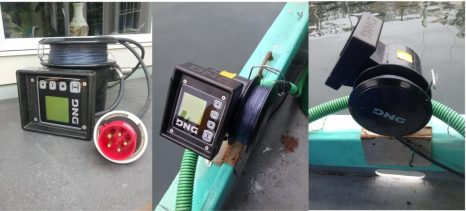 A commercial fisherman from Gloucester said that sometime between Tuesday and early Thursday, one or more intruders broke a padlock off the vessel’s wheelhouse and entered it, making off with a computerized mackerel fishing reel, mackerel hooks, the computer used with the reel, and an additional computer tablet. the equipment is rare, with only seven known individual computer-reel systems operating out of Gloucester. The fisherman has estimated the reels and computer equipment losses at $4,500, with the hooks worth an estimated $1,500. If you have any knowledge of who stole this equipment, or are offered this equipment, please contact the Gloucester Police, or send a tip in confidence to us https://fisherynation.com/contact Thank you 10:59
A commercial fisherman from Gloucester said that sometime between Tuesday and early Thursday, one or more intruders broke a padlock off the vessel’s wheelhouse and entered it, making off with a computerized mackerel fishing reel, mackerel hooks, the computer used with the reel, and an additional computer tablet. the equipment is rare, with only seven known individual computer-reel systems operating out of Gloucester. The fisherman has estimated the reels and computer equipment losses at $4,500, with the hooks worth an estimated $1,500. If you have any knowledge of who stole this equipment, or are offered this equipment, please contact the Gloucester Police, or send a tip in confidence to us https://fisherynation.com/contact Thank you 10:59
3 fishermen rescued off Sydney, Nova Scotia
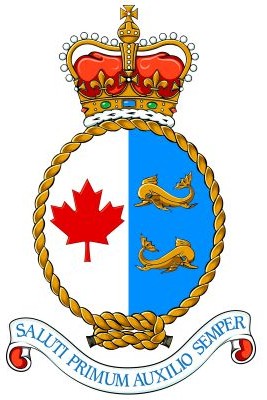 Three fishermen were rescued from their grounded vessel in waters off Sydney early this morning, says the Royal Canadian Navy. The vessel ran aground on Scatarie Island, about 17 nautical miles southeast of Sydney. It crew sent out a distress call around midnight, said navy spokesperson Lt. Christine Hurov. “It was taking on water, so the Joint Rescue Co-ordination Centre tasked 413 Squadron’s Hercules and Cormorant as well as the Canadian Coast Guard ship Spray,” Hurov said. The three crew members were “cold and tired” but otherwise in good shape when the zodiac picked them up, Pink said. The fishing boat was left on Scatarie, but Pink said a salvage operation is in the works. The fishermen were taken aboard the Spray to Louisbourg, from where they left for home. Link 10:22
Three fishermen were rescued from their grounded vessel in waters off Sydney early this morning, says the Royal Canadian Navy. The vessel ran aground on Scatarie Island, about 17 nautical miles southeast of Sydney. It crew sent out a distress call around midnight, said navy spokesperson Lt. Christine Hurov. “It was taking on water, so the Joint Rescue Co-ordination Centre tasked 413 Squadron’s Hercules and Cormorant as well as the Canadian Coast Guard ship Spray,” Hurov said. The three crew members were “cold and tired” but otherwise in good shape when the zodiac picked them up, Pink said. The fishing boat was left on Scatarie, but Pink said a salvage operation is in the works. The fishermen were taken aboard the Spray to Louisbourg, from where they left for home. Link 10:22
New England’s Lobstermen face growing bait shortage
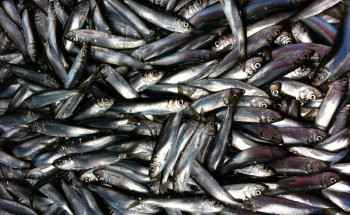 The state of Maine has implemented further restrictions on the amount of herring caught off its coast as New England faces a growing shortage of the fish, the top bait of lobstermen. Regulators and members of the fishing industry say the problem is that not enough herring are being caught on Georges Bank off Massachusetts. The Maine Department of Marine Resources instituted a weekly landing limit of 600,000 pounds of herring per boat to assure landings don’t cause a shortage in August. Both New Hampshire and Maine have always had regulations involving herring caught in the Atlantic Area 1A, but regulators say they fear a shortage could cause the herring fishery to close at the start of September. A typical harvest for an Area 1A Trimester goes from June 1 through Sept. 30. According to New Hampshire Fish & Game, almost 99 percent of Maine Area 1A herring is fished by Maine licensed vessels. The lack of bait is a problem for lobstering in all coastal New England states, but is hitting Maine hardest as it is the largest lobster fishing state in the country. Read the rest here 09:15
The state of Maine has implemented further restrictions on the amount of herring caught off its coast as New England faces a growing shortage of the fish, the top bait of lobstermen. Regulators and members of the fishing industry say the problem is that not enough herring are being caught on Georges Bank off Massachusetts. The Maine Department of Marine Resources instituted a weekly landing limit of 600,000 pounds of herring per boat to assure landings don’t cause a shortage in August. Both New Hampshire and Maine have always had regulations involving herring caught in the Atlantic Area 1A, but regulators say they fear a shortage could cause the herring fishery to close at the start of September. A typical harvest for an Area 1A Trimester goes from June 1 through Sept. 30. According to New Hampshire Fish & Game, almost 99 percent of Maine Area 1A herring is fished by Maine licensed vessels. The lack of bait is a problem for lobstering in all coastal New England states, but is hitting Maine hardest as it is the largest lobster fishing state in the country. Read the rest here 09:15
Three recreational fishermen arrested for fin clipping violations in Rhode Island
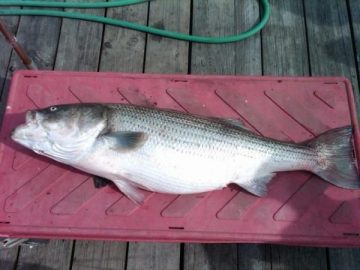 Three men have been charged under new laws crafted to prevent the illegal sale and harvest of Atlantic striped bass in local waters, the state Department of Environmental Management announced on Friday. Authorities said Chad W. Braga, 31, of Swansea, MA, Brandon DeFaria, 34, of Rehoboth, MA and Michael A. Saviano, 35, of Warren, RI, were arrested for fin clipping violations and found to be in possession of bass that had not been clipped.The regulations require recreational fishers to clip the right pectoral fin of striped bass 34 inches or larger when caught. Fish dealers cannot trade in fish without the fin. The idea is to prevent fish caught recreationally being sold in the commercial market to bypass catch limits and fishery restrictions. Read the rest here 08:39
Three men have been charged under new laws crafted to prevent the illegal sale and harvest of Atlantic striped bass in local waters, the state Department of Environmental Management announced on Friday. Authorities said Chad W. Braga, 31, of Swansea, MA, Brandon DeFaria, 34, of Rehoboth, MA and Michael A. Saviano, 35, of Warren, RI, were arrested for fin clipping violations and found to be in possession of bass that had not been clipped.The regulations require recreational fishers to clip the right pectoral fin of striped bass 34 inches or larger when caught. Fish dealers cannot trade in fish without the fin. The idea is to prevent fish caught recreationally being sold in the commercial market to bypass catch limits and fishery restrictions. Read the rest here 08:39
What we know about lampreys — the arctic bloodsuckers that swarm Alaska rivers by the millions
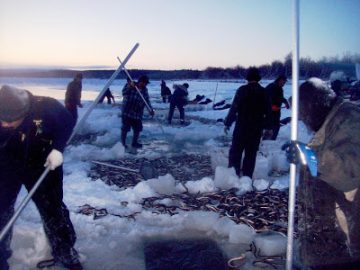 Last summer lampreys fell from the sky in Fairbanks. It’s hard to decide which is more astonishing, the aerodynamic mystery of how they got in the sky to start with or the fact that Alaska has lots and lots of the gruesome, prehistoric, flesh-sucking terrors. Millions of them. Squiggling and lurking in every suitable waterway from Southeast to the Arctic Ocean. There’s no reason to stay out of the water on their account, however. Lampreys only latch onto people if they’re starving. And in Alaska, it’s the humans that eat lampreys, not vice versa. University of Alaska Museum of the North curator of fishes Andres Lopez finds the arctic lamprey a truly intriguing animal. Unchanged for nearly half a billion years, it’s a genuine living fossil. “It’s a jawless vertebrate,” he said. “It has a spinal cord, but no skeleton. Just cartilage. Its teeth are not real teeth, but keratin, more like your fingernails.” Read the story here 20:18
Last summer lampreys fell from the sky in Fairbanks. It’s hard to decide which is more astonishing, the aerodynamic mystery of how they got in the sky to start with or the fact that Alaska has lots and lots of the gruesome, prehistoric, flesh-sucking terrors. Millions of them. Squiggling and lurking in every suitable waterway from Southeast to the Arctic Ocean. There’s no reason to stay out of the water on their account, however. Lampreys only latch onto people if they’re starving. And in Alaska, it’s the humans that eat lampreys, not vice versa. University of Alaska Museum of the North curator of fishes Andres Lopez finds the arctic lamprey a truly intriguing animal. Unchanged for nearly half a billion years, it’s a genuine living fossil. “It’s a jawless vertebrate,” he said. “It has a spinal cord, but no skeleton. Just cartilage. Its teeth are not real teeth, but keratin, more like your fingernails.” Read the story here 20:18
It Takes a Thief! $6,000 fishing gear theft under investigation in Gloucester
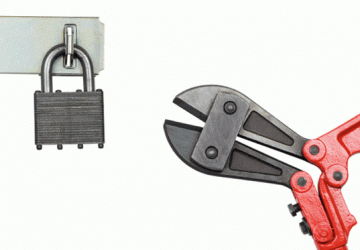 Gloucester police are investigating the theft of an estimated $6,000 worth of fishing gear and electronic equipment from a commercial fishing vessel docked off Harbor Loop. A commercial fisherman said that sometime between Tuesday and early Thursday, one or more intruders broke a padlock off the vessel’s wheelhouse and entered it, making off with a computerized mackerel fishing reel, mackerel hooks, the computer used with the reel, and an additional computer tablet, according to the report from Patrolman James Officer. Officer’s report indicates that the equipment is rare, with only seven known individual computer-reel systems operating out of Gloucester. The fisherman has estimated the reels and computer equipment losses at $4,500, with the hooks worth an estimated $1,500. Police said they are in the process of obtaining serial numbers and other identifying data. Link 18:54
Gloucester police are investigating the theft of an estimated $6,000 worth of fishing gear and electronic equipment from a commercial fishing vessel docked off Harbor Loop. A commercial fisherman said that sometime between Tuesday and early Thursday, one or more intruders broke a padlock off the vessel’s wheelhouse and entered it, making off with a computerized mackerel fishing reel, mackerel hooks, the computer used with the reel, and an additional computer tablet, according to the report from Patrolman James Officer. Officer’s report indicates that the equipment is rare, with only seven known individual computer-reel systems operating out of Gloucester. The fisherman has estimated the reels and computer equipment losses at $4,500, with the hooks worth an estimated $1,500. Police said they are in the process of obtaining serial numbers and other identifying data. Link 18:54
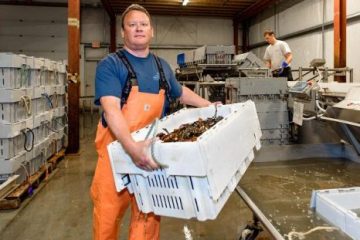
How an ex-dockworker turned his passion for lobster into a $40 million business
After getting a taste of life as a dockworker when he was a teenager, Tom Adams was hooked. More than three decades later, 46-year-old Adams has climbed from earning $4.50 an hour to heading Maine Coast, the seafood distributor he founded in 2011 that generated $40 million in sales last year. “I got a little salt in my blood and ended up staying with it,” Adams said of his early education in the business, which included unloading boats, grading lobster and picking their meat. After years working with the same company that first hired him, Adams decided to part ways with the business and sell the considerable stake he’d built in it. While Adams declined to share an exact figure, he said the investors paid more than $1 million. As part of the deal, he signed a two-year non-compete, which prohibited him from working for a lobster company in the meantime. Video, read the rest here 18:04
Louisiana commercial crab fishermen will see conservation restrictions for next three years
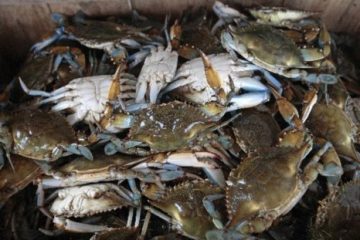 Louisiana took another step toward a commercial crabbing season Thursday after the Louisiana Wildlife and Fisheries Commission approved a proposal that would shut down crab fishing for 90 days over the next three years. Department of Wildlife and Fisheries crustacean biologist Jeff Marx told the commission Louisiana’s crab harvest is too high, and something needs to be done to protect the health of the fishery. “It’s not panic mode, but it is something we’re concerned about,” he said. Marx asked the commission to approve a department plan that would shut down all commercial crabbing for 30 days beginning the third Monday in February. The closure would be in effect in 2017, 2018 and 2019. Also restricted would be harvest of immature female crabs throughout the year, except for those that show signs of imminent molting. So-called “buster” crabs are important for the soft-shell-crab industry. Read the rest here 14:55
Louisiana took another step toward a commercial crabbing season Thursday after the Louisiana Wildlife and Fisheries Commission approved a proposal that would shut down crab fishing for 90 days over the next three years. Department of Wildlife and Fisheries crustacean biologist Jeff Marx told the commission Louisiana’s crab harvest is too high, and something needs to be done to protect the health of the fishery. “It’s not panic mode, but it is something we’re concerned about,” he said. Marx asked the commission to approve a department plan that would shut down all commercial crabbing for 30 days beginning the third Monday in February. The closure would be in effect in 2017, 2018 and 2019. Also restricted would be harvest of immature female crabs throughout the year, except for those that show signs of imminent molting. So-called “buster” crabs are important for the soft-shell-crab industry. Read the rest here 14:55
Marine Safety: The new ACR Electronics Firefly PRO rescue light
 The new Firefly PRO rescue lights by US-owned ACR Electronics are extremely bright, reliable LED strobe lights which, claims ACR, ensure the best chance of visually alerting rescue services for accurate location in an emergency. The powerful lights feature a long battery life and they are targeted at workers at offshore wind farms, in the oil and gas industries, deep sea fishing and other commercial sectors. Available in two versions for manual or water-activated operation, the SOLAS-approved lights use wide light emission LEDs to produce a 360 degree beam of light that is more than 41 candelas bright, allowing for visibility of over 3.5 miles. The compact new strobe lights operate continuously for more than 56 hours with standard alkaline batteries, or for 28 hours using the steady-on feature, due to a light output power management system featuring ACR’s new microprocessor and energy efficient electronics. Read the rest here 11:26
The new Firefly PRO rescue lights by US-owned ACR Electronics are extremely bright, reliable LED strobe lights which, claims ACR, ensure the best chance of visually alerting rescue services for accurate location in an emergency. The powerful lights feature a long battery life and they are targeted at workers at offshore wind farms, in the oil and gas industries, deep sea fishing and other commercial sectors. Available in two versions for manual or water-activated operation, the SOLAS-approved lights use wide light emission LEDs to produce a 360 degree beam of light that is more than 41 candelas bright, allowing for visibility of over 3.5 miles. The compact new strobe lights operate continuously for more than 56 hours with standard alkaline batteries, or for 28 hours using the steady-on feature, due to a light output power management system featuring ACR’s new microprocessor and energy efficient electronics. Read the rest here 11:26
Who’s Behind A Stealth Ad Against The Marine Monument Expansion?
 The author seems to believe a stealth video created by an unknown source, most likely a very tiny group of individuals and citizens with a very meager budget, is outrageous, and destructive to a cause created by a billion dollar ENGO PEW, that has unlimited resources, paid soldiers, and a mega network of PEW spawned ENGO’s like Oceana, EDF! Burgeoning grass-root groups are ramping up their campaigns for and against the proposed expansion of Papahanaumokuakea Marine National Monument as President Obama weighs whether he should single-handedly create the world’s biggest marine reserve around the Northwestern Hawaiian Islands. Civil Beat requested lists from both groups — Expand Papahanaumokuakea and Fishing Means Food — to better assess who actually backs the campaigns. Read the rest here 09:54
The author seems to believe a stealth video created by an unknown source, most likely a very tiny group of individuals and citizens with a very meager budget, is outrageous, and destructive to a cause created by a billion dollar ENGO PEW, that has unlimited resources, paid soldiers, and a mega network of PEW spawned ENGO’s like Oceana, EDF! Burgeoning grass-root groups are ramping up their campaigns for and against the proposed expansion of Papahanaumokuakea Marine National Monument as President Obama weighs whether he should single-handedly create the world’s biggest marine reserve around the Northwestern Hawaiian Islands. Civil Beat requested lists from both groups — Expand Papahanaumokuakea and Fishing Means Food — to better assess who actually backs the campaigns. Read the rest here 09:54
Can 1,500 Scientists All Be Wrong urging Obama to expand Papahanaumokuakea Marine National Monument?
 More than 1,500 scientists from around the world have signed a letter urging President Obama to use his executive authority to expand Papahanaumokuakea Marine National Monument in the Northwestern Hawaiian Islands. “There is a growing consensus among marine scientists that 30% of the oceans be set aside for adequate protection against human exploitation, yet only two percent presently benefits from full protection,” the letter said. The group said expanding the monument from the current 50-mile boundary to the full 200-mile allowable limit as proposed would be a “substantial step in the right direction, creating the largest reserve in the world.” Read the scientists’ letter to the president, along with a list of everyone who signed it. Read the rest here 09:00
More than 1,500 scientists from around the world have signed a letter urging President Obama to use his executive authority to expand Papahanaumokuakea Marine National Monument in the Northwestern Hawaiian Islands. “There is a growing consensus among marine scientists that 30% of the oceans be set aside for adequate protection against human exploitation, yet only two percent presently benefits from full protection,” the letter said. The group said expanding the monument from the current 50-mile boundary to the full 200-mile allowable limit as proposed would be a “substantial step in the right direction, creating the largest reserve in the world.” Read the scientists’ letter to the president, along with a list of everyone who signed it. Read the rest here 09:00
Brownsville-Port Isabel Shrimp fleet blessing comes amid dour season outlook
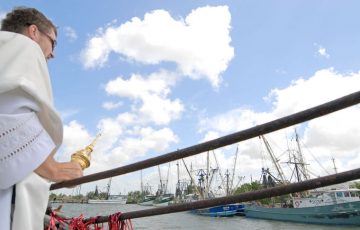 With local crews preparing boats for the reopening of the Texas shrimp season in about a week, the Brownsville-Port Isabel shrimp fleet once again received a much-needed blessing Wednesday courtesy of Father Mark Watters. In the shade of a large, open-air shed at Zimco Marine on the Brownsville shrimp basin, diesel exhaust fumes from the idling trawler “Miss Opal” borne through the crowd by a stiff south wind, Watters led prayers against the industry’s tough times and the negative emotions they produce, and delivered a rousing sermon in the manner of a coach’s pre-game pep talk. Gary Graham, a professor and marine fisheries specialist with Sea Grant Texas at TexasA&MUniversity, was also in attendance, and said that excessive freshwater in the bays due to heavy spring rains has hindered development of the brown shrimp that the local fleet largely depends on. Not just the size but also the volume of shrimp appears to have been affected, he said. “I’m concerned with the overall number of shrimp that are going to be produced from our Texas base this year because of all the freshwater,” Graham said. Read the story here 18:59
With local crews preparing boats for the reopening of the Texas shrimp season in about a week, the Brownsville-Port Isabel shrimp fleet once again received a much-needed blessing Wednesday courtesy of Father Mark Watters. In the shade of a large, open-air shed at Zimco Marine on the Brownsville shrimp basin, diesel exhaust fumes from the idling trawler “Miss Opal” borne through the crowd by a stiff south wind, Watters led prayers against the industry’s tough times and the negative emotions they produce, and delivered a rousing sermon in the manner of a coach’s pre-game pep talk. Gary Graham, a professor and marine fisheries specialist with Sea Grant Texas at TexasA&MUniversity, was also in attendance, and said that excessive freshwater in the bays due to heavy spring rains has hindered development of the brown shrimp that the local fleet largely depends on. Not just the size but also the volume of shrimp appears to have been affected, he said. “I’m concerned with the overall number of shrimp that are going to be produced from our Texas base this year because of all the freshwater,” Graham said. Read the story here 18:59
The Case of the Poisoned Fish, by Sidney B. Silverman
 In the mid-1980s, East Hampton’s summer and year-round weekend population was growing rapidly. The demand for water views in particular was enormous, and the seemingly endless construction of new homes along the shoreline caused wastewater and other pollutants to run off into the bays. The contaminants made their way into clam and scallop beds; at least two lucrative fishing areas were damaged. The death knell for commercial fishing sounded when striped bass became contaminated by PCBs, polychlorinated biphenyls, and in 1986 New York State, citing health reasons, closed the bass fishery. Fishermen called the striped bass their “money fish,” providing what small profit they made each year; the other catches only covered overhead. General Electric was the cause of the contamination. It operated several plants adjacent to the Hudson River in upstate New York. The plants manufactured transformers and capacitors, using PCBs, a chemically stable, nonflammable fluid and a suspected carcinogen, for insulation. In handling this chemical, G.E. was sloppy to the point of recklessness. Read the story here 17:54
In the mid-1980s, East Hampton’s summer and year-round weekend population was growing rapidly. The demand for water views in particular was enormous, and the seemingly endless construction of new homes along the shoreline caused wastewater and other pollutants to run off into the bays. The contaminants made their way into clam and scallop beds; at least two lucrative fishing areas were damaged. The death knell for commercial fishing sounded when striped bass became contaminated by PCBs, polychlorinated biphenyls, and in 1986 New York State, citing health reasons, closed the bass fishery. Fishermen called the striped bass their “money fish,” providing what small profit they made each year; the other catches only covered overhead. General Electric was the cause of the contamination. It operated several plants adjacent to the Hudson River in upstate New York. The plants manufactured transformers and capacitors, using PCBs, a chemically stable, nonflammable fluid and a suspected carcinogen, for insulation. In handling this chemical, G.E. was sloppy to the point of recklessness. Read the story here 17:54
California fishing groups unite to fight offshore monuments that prohibit commercial fishing
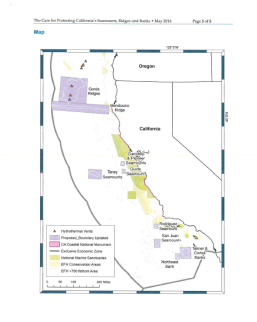 July 7, 2016 — A collection of more than 40 West Coast commercial and recreational fishing groups, working in conjunction with the National Coalition for Fishing Communities, has written to the White House, the Secretaries of Commerce and Interior, and officials in the National Oceanic and Atmospheric Administration, opposing the proposed designation of marine monuments off the coast of California that prohibit commercial fishing…The letter is in direct response to a recent proposal calling on President Obama to declare virtually all (SRB’s) off the California coast as National Monuments using his executive authority under the Antiquities Act. Read the rest here – Read the letter here 16:28
July 7, 2016 — A collection of more than 40 West Coast commercial and recreational fishing groups, working in conjunction with the National Coalition for Fishing Communities, has written to the White House, the Secretaries of Commerce and Interior, and officials in the National Oceanic and Atmospheric Administration, opposing the proposed designation of marine monuments off the coast of California that prohibit commercial fishing…The letter is in direct response to a recent proposal calling on President Obama to declare virtually all (SRB’s) off the California coast as National Monuments using his executive authority under the Antiquities Act. Read the rest here – Read the letter here 16:28
MAIB ‘Safety Lessons’ published one year after the tragic death of two Teignmouth fishermen
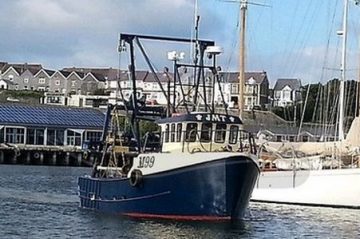 A list of so-called ‘Safety Lessons’ has been published following the sinking of a fishing boat in which two men from Teignmouth died. Skipper Michael Hill, who was 22, and crewman Shane Hooper, a 33-year-old father of three, died when the scalloper JMT went down four miles off Rame Head last July. The MAIB investigation identified that: • JMT capsized and sank at around 1501 on 9 July 2015; the weather was good at the time, with slight seas. • The vessel had only 25% of the reserve of stability required by larger fishing vessels. • The vessel’s stability had been adversely affected by structural modifications and by aspects of the vessel’s operation. • Capsize was possibly triggered by emptying the starboard dredges while the port dredges and their contents remained suspended. • The crew’s likelihood of survival was reduced by not having the opportunity to broadcast a distress message, release the EPIRB from its stowage, lifejackets not being worn and the failure of the liferaft to surface. Read the report, and the article here 12:11
A list of so-called ‘Safety Lessons’ has been published following the sinking of a fishing boat in which two men from Teignmouth died. Skipper Michael Hill, who was 22, and crewman Shane Hooper, a 33-year-old father of three, died when the scalloper JMT went down four miles off Rame Head last July. The MAIB investigation identified that: • JMT capsized and sank at around 1501 on 9 July 2015; the weather was good at the time, with slight seas. • The vessel had only 25% of the reserve of stability required by larger fishing vessels. • The vessel’s stability had been adversely affected by structural modifications and by aspects of the vessel’s operation. • Capsize was possibly triggered by emptying the starboard dredges while the port dredges and their contents remained suspended. • The crew’s likelihood of survival was reduced by not having the opportunity to broadcast a distress message, release the EPIRB from its stowage, lifejackets not being worn and the failure of the liferaft to surface. Read the report, and the article here 12:11
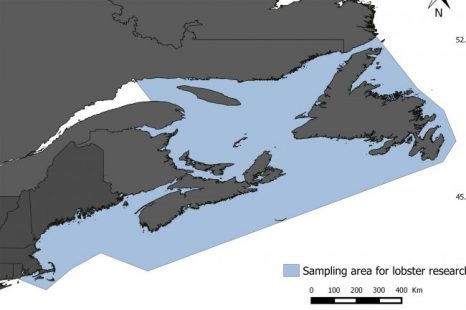
Research looking at genetic structure of Atlantic lobster
A PhD student from Laval University, Dorant is heading up a research project which seeks to better understand the genetic structure of the American lobster in Eastern Canada and he’s getting support from fisheries organizations, government departments and academics throughout the region. A better understanding could help establish guidelines and recommendations for building a more sustainable fishery, Dorant suggests. His project is co-directed by professors from Laval and University of New Brunswick. Read the story here 11:41
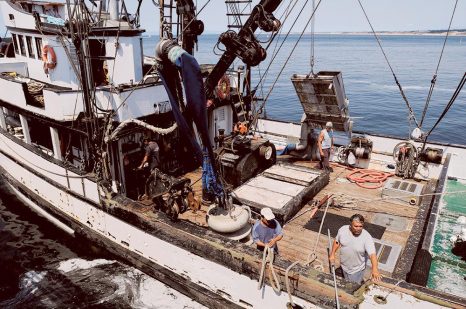
California’s confidential fishing rights leave millions of dollars in mystery.
Over years of writing about and working in the fishing industry, I (Nick Rahaim) have often found it difficult to substantiate many things told to me – often as gospel – on fishing boats and in salty bars. Many of those stories aren’t of much consequence – that most fishermen found dead in the water have their fly unzipped, or that whistling in the wheelhouse will blow up a storm. But another story represented enough potential injustice that I had to learn more. A year ago, while working as a fisherman and freelance journalist in Alaska, I heard California seafood companies that buy and sell product were buying up squid permits – permanent fishing rights, limited in number, bought and sold on a market – from independent fishermen. The implication: They were trying to corner the market, creating squid cartels where they could control prices paid to fishermen, causing ripples down the supply chain to the consumer. (More on the system of fishing rights later.) Read the story here 10:45
Last In-First Out: Todays various articles from the region
‘More questions than there are answers,’ FFAW says on scrapped LIFO policy – Click here
Federal fisheries minister’s decision on dispute in the Atlantic region sure to anger Nova Scotian fishermen – Click here
LIFO ban good news for Newfoundland fishery: Bill Barry Click here
‘LIFO is not a sustainable instrument of public policy’ – Click here
10:13
Scungilli! – Whelk, Once Ignored by Fishermen, Now a Prized Catch
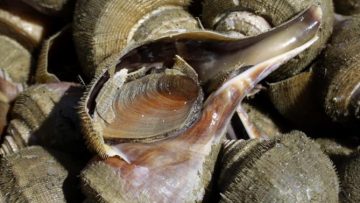 The sea snails known by Italian-Americans as scungilli used to be such a niche market that fishermen ignored them when they turned up in lobster traps or oyster dredges. Now they’re a prized commodity. Because of growing demand in Asia and the collapse of other industries, such as lobster, fishermen searching for something else to catch are keeping and selling the big marine snails. A voracious predator, it crawls along the bottom of Atlantic coastal inlets from Nantucket Sound to North Carolina’s Outer Banks, piercing its razor-edged proboscis into clams and other prey. It’s an increasingly lucrative hunk of meat: A large whelk can be sold for as much as $7 in a live market. The annual dockside value of the whelk catch now tops $1 million in Virginia and Rhode Island, $1.4 million in New Jersey and $5.7 million in Massachusetts, according to marine fishery agencies in those states. In Delaware, knobbed and channeled whelks are now the third most valuable fishery behind blue crabs and striped bass. Read the story here 08:35
The sea snails known by Italian-Americans as scungilli used to be such a niche market that fishermen ignored them when they turned up in lobster traps or oyster dredges. Now they’re a prized commodity. Because of growing demand in Asia and the collapse of other industries, such as lobster, fishermen searching for something else to catch are keeping and selling the big marine snails. A voracious predator, it crawls along the bottom of Atlantic coastal inlets from Nantucket Sound to North Carolina’s Outer Banks, piercing its razor-edged proboscis into clams and other prey. It’s an increasingly lucrative hunk of meat: A large whelk can be sold for as much as $7 in a live market. The annual dockside value of the whelk catch now tops $1 million in Virginia and Rhode Island, $1.4 million in New Jersey and $5.7 million in Massachusetts, according to marine fishery agencies in those states. In Delaware, knobbed and channeled whelks are now the third most valuable fishery behind blue crabs and striped bass. Read the story here 08:35







